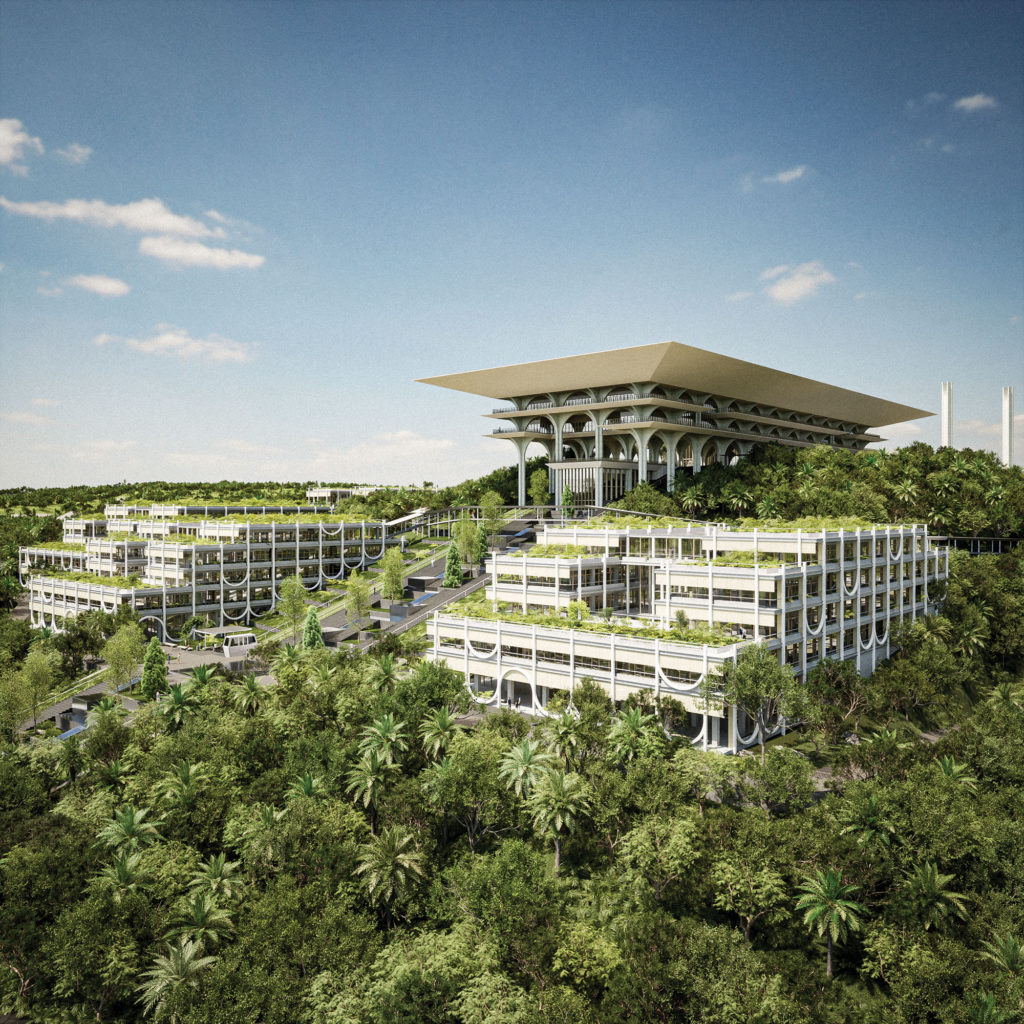Huma Betang Umai: What should a future governmental palace look like?
December 7, 2022
Indonesia, as one of the world’s largest populations, has drawn much attention and critique when it officiated the plan of moving its national capital, especially from many sectors of society expressing concerns about the impact—whether social or environmental.
RELATED: Commentary | Form Follows Political Paradigm
While the government of Indonesia has directly appointed a designer for the new Presidential Palace, other buildings in the central government complex were opened for competition, including the Vice-Presidential Palace complex with its supporting offices. Palaces have always represented power, but in the age of climate emergency and various socioeconomic crises, any new types of government buildings should aim to be exemplary architecture built on ecologically sensitive principles and regenerative strategies—instead of business-as-usual processes—to serve as models for the rest of the nation.
Hence, the design by SHAU, Studio APTA and Studio Cilaki 45 seeks more than representation. “It is about legacy and leaving something for generations to come. Thinking for the future is one of the main things in how we began the design,” said Daliana Suryawinata of SHAU at a webinar presentation hosted by Diaspora Indonesia on 8 July 2022. Notably, their performance-driven design references key performance indices (KPIs) that target to go beyond today’s Green building ratings to predict needs for the next 30 years.
SITE-DRIVEN CONCEPT
The site is a hill covered with mostly eucalyptus trees for pulp production. In the 1980s, the primary rainforests had been replaced by monocultural production forests, which have a negative impact on the ecosystem. Currently, there is still a patch of heterogenous rainforest left on the site, which is maintained as an important part of the design.

The hilly landscape brought about the idea of creating an iconic volume atop a hill, done in a way that could maximise the existing contours without too much cut and fill. The main building will be supported by a cascade of supporting buildings down the slope, avoiding areas that were indicated as geologically unfit for construction.
“The design of the main building is a unified palace-office-residence at this stage—with the office part on the west side connected to the cascading staff offices down the slope, while the residences have a different access,” Florian Heinzelmann of SHAU added.
The buildings’ shapes are referenced from a vernacular Dayak (indigenous Kalimantan tribe) architecture, the longhouse (rumah panjang). SHAU and APTA came up with the building’s name from Dayak language—huma betang means longhouse, based on a philosophy of harmonious living and respect among people and all creatures; umai means mother, making it a mothership building or Mother’s Longhouse.
Suryawinata explained: “We envision that everyone—not only the Vice President or their family and guests but also the staff—will have views to the botanical garden. This is the essence of the longhouse: equality. The shared corridor and the access towards the view are equal.”
[This is an excerpt. Subscribe to the digital edition or hardcopy to read the complete article.]
PROJECT DATA
Project Name
Huma Betang Umai
Location
Nusantara Capital City (officiated future capital), East Kalimantan, Indonesia
Status
Competition
Expected Completion
2024
Site Area
148,417 square metres
Gross Floor Area
38,400 square metres
Building Height
2–5 floors
Client/Owner
Government of Indonesia
Architecture Firms
SHAU; Studio APTA; Studio Cilaki 45
Principal Architects
Florian Heinzelmann; Daliana Suryawinata
Collaborators
PT Ruang Jelajah; Penny Ariesanty
Images
SHAU
Related story:
Form Follows Political Paradigm: A Reflection on Indonesia’s New Capital City

Read more stories from FuturArc 4Q 2022 Year-End Issue!

To read the complete article, get your hardcopy at our online shop/newsstands/major bookstores; subscribe to FuturArc or download the FuturArc App to read the issues.


